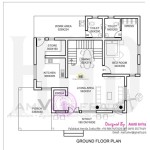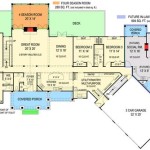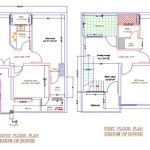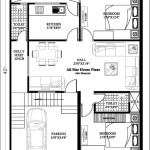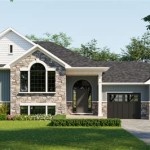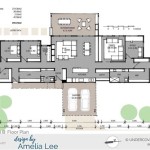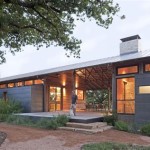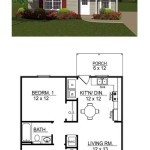30 By House Plans South Facing: Optimizing Sunlight and Space
Designing a house plan for a south-facing property offers unique opportunities to maximize natural light and create a comfortable, energy-efficient living space. A 30-foot width presents specific architectural considerations, demanding careful planning to ensure optimal functionality and aesthetic appeal. This article explores key aspects of designing 30 by house plans south facing, focusing on sunlight management, spatial organization, and design considerations.
South-facing houses benefit from consistent sunlight exposure throughout the day. This can translate into lower energy bills for heating and lighting, especially during colder months. However, uncontrolled solar gain in the summer can lead to overheating. Therefore, careful planning of window placement, shading devices, and ventilation is crucial. A well-designed 30 by house plan south facing can create a comfortable and sustainable living environment by harnessing the sun's energy while mitigating its potential drawbacks. The layout of rooms, selection of materials, and incorporation of passive solar design principles are all vital components of a successful design.
Key Point 1: Maximizing Natural Light and Passive Solar Heating
One of the primary advantages of a south-facing house is the potential for maximizing natural light. Rooms on the south side of the house receive direct sunlight for extended periods, reducing the need for artificial lighting. This is especially beneficial for living areas, kitchens, and home offices. Large windows, particularly on the south facade, can capture significant amounts of sunlight, but careful consideration must be given to heat gain during the summer months. The strategic use of overhangs, awnings, and deciduous trees can provide shade during the hottest part of the year while allowing sunlight to penetrate during the winter when the sun is lower in the sky.
Passive solar heating is another significant benefit of a south-facing orientation. By allowing sunlight to enter the house and be absorbed by thermal mass materials such as concrete floors, brick walls, or water containers, solar energy can be stored and released gradually, providing a natural source of heat. The appropriate amount of thermal mass will depend on the climate and the specific design of the house. In colder climates, more thermal mass may be desirable to store heat effectively. The design of the south-facing facade must also consider the angle of the sun throughout the year to optimize solar gain in the winter and minimize it in the summer.
To effectively harness solar energy, consider the roof overhang design, which needs to be carefully calculated based on the latitude of the location. The aim is to shade the south-facing windows during the summer months when the sun is high and allow sunlight to penetrate during the winter months when the sun is low. Properly sized and positioned overhangs can significantly reduce the need for air conditioning in the summer and heating in the winter.
The choice of glazing for south-facing windows is also crucial. Low-emissivity (Low-E) coatings can reduce heat transfer, helping to keep the house cooler in the summer and warmer in the winter. Double-paned or triple-paned windows provide better insulation, further reducing energy costs. The use of solar screens or reflective films can also help to reduce solar heat gain, particularly in hotter climates. Careful selection of window materials will contribute significantly to the overall energy efficiency of the dwelling.
Key Point 2: Spatial Organization and Functional Layout
With a 30-foot width, careful spatial planning is essential to create a functional and comfortable living space. In a south-facing house, orienting living areas, dining rooms, and kitchens towards the south is generally recommended to take advantage of natural light and passive solar heating. Bedrooms, bathrooms, and storage areas can be situated on the north side of the house, as they require less direct sunlight. Consideration must be given to the placement of hallways and staircases to optimize circulation and minimize wasted space.
Open floor plans are often popular in modern house designs, allowing for greater flexibility and a more spacious feel. However, in a 30-foot-wide house, it is important to define distinct zones within the open space to maintain functionality and privacy. The use of partial walls, furniture arrangements, or changes in flooring can help to create visual separation between different areas. Careful consideration should also be given to noise control, especially in open-plan living areas.
The placement of the entrance is another important consideration. In a south-facing house, the entrance is often located on the east or west side to provide shelter from the prevailing winds and to minimize heat loss in the winter. A well-designed entrance should include a foyer or mudroom to provide a transition space between the outdoors and the indoors. This space can also serve as a storage area for coats, shoes, and other outdoor gear.
Vertical space also plays a role in spatial organization. Two-story designs can maximize the use of a smaller lot, providing more living space without increasing the footprint of the house. Staircases should be designed to be both functional and aesthetically pleasing, serving as a focal point in the interior design. The layout of the second floor should complement the layout of the first floor, with bedrooms and bathrooms ideally located on the quieter north side of the house.
Furthermore, consider the outdoor spaces. A south-facing house offers great opportunities for outdoor living. A patio or deck on the south side of the house can provide a sunny space for relaxation and entertainment. A well-designed landscape can also enhance the aesthetic appeal of the house and provide shade and privacy.
Key Point 3: Design Considerations and Material Selection
The aesthetic design of a 30 by house plan south facing should complement its functionality. Architectural styles such as contemporary, modern, and traditional can all be adapted to a south-facing orientation. Key design considerations include roof pitch, window styles, exterior materials, and landscaping. The choice of materials should be based on both aesthetic appeal and durability, as well as their impact on the energy efficiency of the house.
The exterior cladding should be selected to provide insulation and protection from the elements. Materials such as brick, stone, wood siding, and stucco are all common choices, each with its own advantages and disadvantages. Light-colored materials can help to reflect sunlight and reduce heat gain in the summer, while darker materials can absorb heat and provide warmth in the winter. The choice of materials should be based on the climate and the desired aesthetic.
Roof design is also an important consideration. A sloped roof can provide space for an attic or additional storage, while a flat roof can be used as a terrace or garden. The roof should be well-insulated to prevent heat loss in the winter and heat gain in the summer. The roof can also be designed to accommodate solar panels, further enhancing the energy efficiency of the house.
Interior design should also be coordinated with the overall design of the house. The use of light colors and reflective surfaces can help to maximize natural light, while darker colors can create a sense of warmth and intimacy. The choice of flooring materials, furniture, and accessories should be based on the desired aesthetic and the functionality of the space.
Finally, consider the impact of the house on the environment. Sustainable design principles should be incorporated into all aspects of the design, from the selection of materials to the use of energy-efficient appliances. A well-designed 30 by house plan south facing can be both beautiful and environmentally friendly, providing a comfortable and sustainable living space for years to come. Integrating sustainable materials like reclaimed wood, recycled materials, and low-VOC paints contributes to a healthier indoor environment and reduces the building's environmental footprint.
In conclusion, designing a 30 by house plan south facing requires careful consideration of sunlight management, spatial organization, and design aesthetics. By optimizing natural light, creating functional layouts, and selecting appropriate materials, it is possible to create a comfortable, energy-efficient, and visually appealing home.

30x30 House Plan 4bhk South Facing 900 Sq Ft 30 20x40 Plans Bungalow Floor 30x40

30x30 South Facing House Plans As Per Vastu Plan And Designs Books

30x30 South Facing House Plans As Per Vastu Plan And Designs Books

20x30 South Facing House Plan Map Studio

Stunning 25x30 South Face House Design

20 30 Duplex House Plans South Facing Best 3bhk

30x30 South Face House Model Plan And Designs Books

20x30 Duplex House Plans South Facing 2bhk Dupplex Design Plan

House 30 X30 South Facing S3 Rsdc
30 X 25 South Facing 2bhk House Plan According To Vastu

